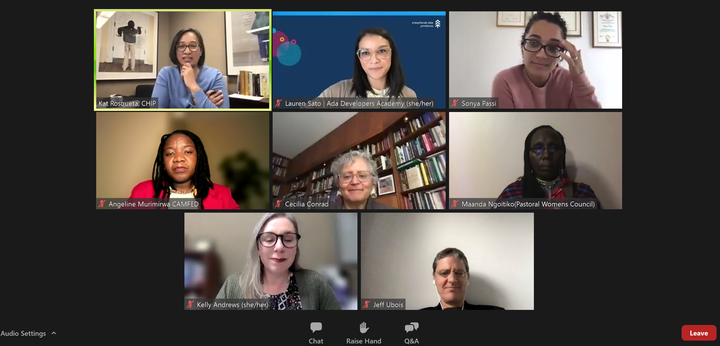For the last two years, we have worked with the Center for High Impact Philanthropy (CHIP) at the University of Pennsylvania to develop a toolkit called “Choosing Change: How to Assess Grant Proposals for Their Potential to Address Structural Inequality.” This free resource includes recommendations and criteria that can help donors who wish to identify ideas and proposals that have the best chance of reducing structural inequalities.
In most philanthropic foundations, program areas evolve through binary decisions regarding individual grant applications (“yes” or “no”) and through the development of selection criteria (or rubrics) that are used to seek and select new awards. As a result, these grantees and criteria define the "identity" of a foundation, program, or a donor. At Lever for Change, we try to do things differently.
For every one of our challenges, we carefully develop criteria that external, independent judges will apply to the proposals we receive. It's one of the hardest things we do and raises lots of difficult questions. For instance, what differentiates a proposal that is likely to be useful and effective from one that isn't? Which criteria are most likely to be understood and applied consistently by judges with different backgrounds? How strictly or loosely do we define ideas, or account for what we don't know?
What we have found is that our selection criteria improve with use, especially when they are applied to many proposals concurrently. Often, our donor partners find that the process of considering grant applications sharpens the criteria they have developed. That’s why we are always interested in new efforts to develop criteria that can help us (and funders) identify the "best" proposals for any given purpose.
CHIP brings a unique expertise in bridging deep academic work with donor practice. Its focus in this project with Lever for Change is driven by a sense that treating structural inequality allows philanthropy to address the underlying causes for a wide variety of social problems.
As noted in the guide, “The rubric in this new toolkit for assessing proposals contains five elements. The first two elements—inclusivity and durability of power—are central to structural inequality, because the exclusion of people from positions of power defines structural inequality. Considering and assessing these two elements will help users understand whether a proposal is positioned to tackle structural inequality. To succeed, a potential grantee will need the capabilities to implement a solution successfully. The next three elements—strength of evidence, organizational capacity, and systems-level impact—address the proposal’s likelihood of succeeding.”
These criteria are more considered and credible than most, as they were developed based on a deep dive into prior academic and philanthropic work, and then applied to proposals drawn from our Bold Solutions Network by actual donors. The selection criteria were then further refined by CHIP to eliminate ambiguity and to create guidance for donors who wish to use them. Our intention is to refine and then share these criteria to benefit donors and drive more funding more effectively.
"We not only reviewed all the relevant academic research; equally important, we looked at existing frameworks," said Katherina 'Kat' M. Rosqueta, the founding executive director of the Center for High Impact Philanthropy. "We vetted our early drafts of this [rubric] with nonprofit leaders, grant makers, and individual donors. For us, that's our form of peer review to make sure this truly is useful and actionable in the real world."

On May 2, CHIP hosted a webinar to launch “Choosing Change” that highlighted members of our Bold Solutions Network who exemplify one or more of the five criteria in the toolkit:
- FreeFrom: A Call to Action: Holding Society Accountable for Intimate Partner Violence
- CAMFED SISTER: A Scalable Solution to Girls' Exclusion from Education
- Pastoral Women's Council: 50,000 Pastoralist Women: Agents for Change, Transforming Communities
- Ada Developers Academy: Changing The Face Of Tech
"Lever for Change is committed to sharing our data for the benefit of philanthropists, nonprofits, and for philanthropy writ large," said our CEO, Cecilia Conrad. "After a dozen challenges, we know that there is still more to do to address the invisible obstacles that impede a focus on equity in funding decisions. One area for scrutiny is the list of criteria and the rubric that we ask our panels of independent evaluators to use when they score proposals."
In a world where just 26 individuals have more wealth than the poorest 3.8 billion, it is hard to deny the reality of structural inequality. Whether philanthropy as a whole can (or should) address such inequality is the subject of intense debate. For now at least, potential philanthropists who wish to make a difference have a good place to start. Contact our team if you would like more information about our Bold Solutions Network members.
